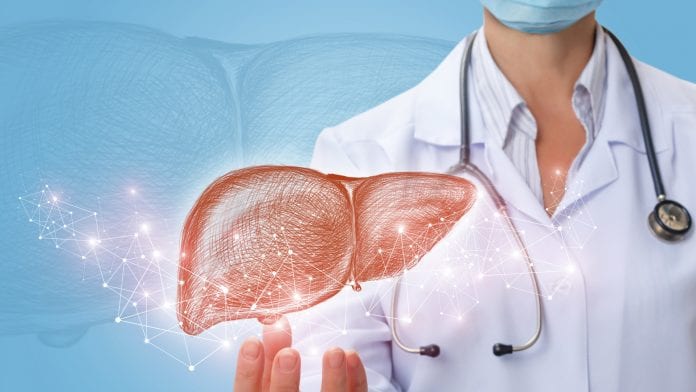About Treatment
Liver transplantation is the most effective and often the only radical and promising method for treating patients with end-stage chronic liver diseases, acute fulminant liver failure, malignant and benign liver tumors. Liver transplantation technique was developed in detail by the American surgeon Thomas Starzl, who successfully introduced it into medical practice in 1963.
Donor organs are selected strictly in accordance with the law and ethics. Before removal, a set of studies is carried out to assess the suitability of the organ and exclude the risk of transmission of infections. The liver undergoes special conservation, which ensures its long-term preservation and suitability for transplantation. The preparation of the transplant is many hours of work of dozens of people, ensuring the high viability of the donor organ.
Related Transplantation
The most advantageous solution when planning liver transplant is to take a part of the organ from patient's relative. This solution of the problem has a number of significant advantages:
the possibility of obtaining a good quality organ and reducing the period of cold ischemia for the donor liver;
no need to search for an organ and wait for one's turn on the waiting list;
faster process of preparing an organ for transplantation;
better engraftment of the organ;
after surgery, patient can take fewer immunosuppressants.
The requirements that must be met for a liver transplant from a relative are:
donor must be 18 years old;
no contraindications to surgery;
blood groups, Rh-factor and tissue belonging in donor and recipient must be the same.
If a liver transplant is performed on a child, then usually only one half of the left organ is removed from the donor.
When the liver is taken from a living donor, only part of the organ is removed. This procedure is safe and after a while the liver is restored (its volume reaches 85% of the previous one).
This method of removing a part of the liver from a living donor-relative has a number of negative aspects:
the possibility of complications in the donor;
the need to precisely "fit" the transplanted part of the liver to recipient's body;
more likely to develop a relapse of the disease after liver transplant.
After Operation
Liver transplantation is one of the most difficult operations on the abdominal organs. Restoration of blood flow through the donor liver usually occurs immediately on the operating table. But the operation itself does not end patient's treatment. A difficult and long stage of postoperative recovery begins.
Patient will spend about a week after the operation in the intensive care unit.
-
Operation Duration
Liver transplant surgery in most centers takes about 5-7 hours.
-
Hospital Stay
7-10 days
The conditions in which the need for liver transplantation arises are quite diverse:
Acute (fulminant) liver failure
Decompensated liver cirrhosis and its complications - ascites, chronic blood loss due to bleeding from porto-caval shunts, liver cancer, bleeding from varicose veins, hepatocellular insufficiency.
Systemic metabolic disorders caused by liver damage: α1-antitrypsin deficiency, familial amyloidosis, glycogen storage disease, hemochromatosis, primary oxaluria, Wilson's disease.
Systemic complications of chronic liver diseases - hepatopulmonary syndrome, portopulmonary hypertension
The more or less obvious "absolute" contraindications for liver transplantation, in the presence of which liver transplantation is not discussed, include the following circumstances:
Severe decompensated pathology of the cardiovascular system or lungs
Continuing dependence on alcohol or drugs
Hepatocellular carcinoma with metastatic extension
Active infectious processes that are not amenable to therapy (bacterial endocarditis without success from therapy, AIDS, active tuberculosis with the impossibility of cure, etc)
Anatomical abnormalities that technically do not allow liver transplantation
Intrahepatic cholangiocarcinoma
Hemangiosarcoma
Systematic compliance
Before upcoming liver transplantation, patient undergoes the following examinations and procedures:
anthropometric measurements (height, body weight, abdominal circumference, etc.);
analysis for blood group and Rh factor;
coagulogram;
blood tests for HIV, HCV-Ab, syphilis, HBcor IgG and HBcor IgM, HBs-Ag, HBe-Ag, HBe-Ag;
blood test for PCR (when detecting diseases of HCV or HBV);
bacteriological cultures of discharge from the nose and throat, sputum, urine, feces and vaginal discharge;
study of the function of external respiration;
chest x-ray;
esophagogastroduodenoscopy;
ECG
ultrasound of the abdominal organs with obligatory Doppler examination of the vessels of the liver and kidneys;
colonoscopy;
radioisotope study of the kidneys;
static and dynamic kidney scintigraphy;
HLA (tissue typing);
blood tests for tumor markers: CEA, AFP, Ca-19-9;
direct or indirect cholangiography;
MRI cholangiography (if necessary);
CT of the chest and abdomen with contrast (if tumor is suspected);
puncture biopsy of the liver (if necessary);
analysis of ascitic fluid (during laparocentesis);
diagnosis of fermentopathies, autoimmune diseases and other specific tests, depending on the clinical case;
dentist consultation;
consultation with an anesthesiologist;
a council of doctors of transplant center.
When identifying indications and excluding contraindications for liver transplantation with patients included in the waiting list, the following work is carried out:
Determination and correction of nutritional status.
Continuous dynamic monitoring of esophageal varices and their endoscopic ligation (as needed).
Vaccination of patients against hepatitis B, who have not identified markers of HBV infection.
Decompression and sanitation of the biliary tract.
Psychotherapeutic preparation of patient for upcoming transplant.
Sometimes the following complications develop after liver transplantation:
bleeding - occurs in about 7.5% of cases;
vascular complications (steal syndrome, thrombosis, narrowing of the hepatic artery) - such consequences are very dangerous and require repeated transplantation, occur in about 3.5% of patients;
primary inactivity of the transplanted liver - this complication occurs infrequently, but also requires re-transplantation;
obstruction of hepatic veins - rarely occurs, is more often observed with transplantation of a part of the liver;
stenosis or thrombosis of the portal vein - detected by ultrasound in approximately 1.3% of patients and, if immediate treatment is carried out, can be eliminated without surgery;
immunological problems - in many patients, acute or chronic rejection of the transplanted organ may occur, in acute cases, the necessary measures may be taken to stop this process, but it is very difficult to fight chronic rejection;
small graft size syndrome - occurs only with liver transplants from a living donor, when surgeons have incorrectly calculated the size of the transplanted organ part (if the signs of such a syndrome do not go away after two days, then there is a need for a second operation);
infection - in many patients it can be asymptomatic, but in others it leads to severe inflammatory processes and can become the cause of death (to prevent such a complication, patient is prescribed antibiotic therapy before the operation);
bile leakage and biliary structures - occur quite often in patients of any age.











